#Miss continental 2016
Text
Western Animated Movie Sequel Timeline
For reference... On how few theatrical animated movie sequels were made in the West vs. how many have been made since the early 2000s... (Streaming titles like THE SEA BEAST 2 will be included, because these are big budget enough to have been theatrical releases.)
Titles highlighted in blue have commas in them, this denotes that you're not looking at two separate titles. (Just in case you happen to not know-)
I also won't include reboots. For example: The upcoming Paramount Animation film TEENAGE MUTANT NINJA TURTLES: MUTANT MAYHEM, which despite being a TMNT movie, it has no other relation to the Imagi Studios 2007 TMNT movie. The same goes for the two SMURFS reboots, 2017's THE LOST VILLAGE and Paramount's untitled upcoming musical.
I'll also leave out animated movies that are part of franchises that are largely live-action, like STAR WARS: THE CLONE WARS.
1972: SNOOPY, COME HOME
1974: THE NINE LIVES OF FRITZ THE CAT
1976: RACE FOR YOUR LIFE, CHARLIE BROWN
1980: BON VOYAGE, CHARLIE BROWN (AND DON'T COME BACK!!)
1986: THE CARE BEARS MOVIE II: THE NEXT GENERATION
1987: THE CARE BEARS IN WONDERLAND
1990: THE RESCUERS DOWN UNDER
1991: AN AMERICAN TAIL: FIEVEL GOES WEST
1996: ALL DOGS GO TO HEAVEN 2
1997: THE SWAN PRINCESS II: ESCAPE FROM CASTLE MOUNTAIN
1999: TOY STORY 2, FANTASIA 2000
2000: THE TIGGER MOVIE, RUGRATS IN PARIS: THE MOVIE
2002: RETURN TO NEVER LAND
2003: PIGLET'S BIG MOVIE, THE JUNGLE BOOK 2, LOONEY TUNES: BACK IN ACTION
2004: SHREK 2
2005: POOH'S HEFFALUMP MOVIE
2006: ICE AGE: THE MELTDOWN
2007: SHREK THE THIRD
2008: MADAGASCAR: ESCAPE 2 AFRICA
2009: ICE AGE: DAWN OF THE DINOSAURS
2010: SHREK FOREVER AFTER, TOY STORY 3
2011: HOODWINKED TOO! HOOD VS. EVIL, KUNG FU PANDA 2, CARS 2, PUSS IN BOOTS, HAPPY FEET TWO
2012: MADAGASCAR 3: EUROPE'S MOST WANTED, ICE AGE: CONTINENTAL DRIFT
2013: MONSTERS UNIVERSITY, DESPICABLE ME 2, THE SMURFS 2, PLANES, CLOUDY WITH A CHANCE OF MEATBALLS 2
2014: RIO 2, HOW TO TRAIN YOUR DRAGON 2, PENGUINS OF MADAGASCAR
2015: THE SPONGEBOB MOVIE: SPONGE OUT OF WATER, MINIONS, HOTEL TRANSYLVANIA 2
2016: KUNG FU PANDA 3, FINDING DORY, ICE AGE: COLLISION COURSE
2017: THE LEGO BATMAN MOVIE, CARS 3, THE NUT JOB 2: NUTTY BY NATURE, THE LEGO NINJAGO MOVIE
2018: SHERLOCK GNOMES, INCREDIBLES 2, HOTEL TRANSYLVANIA 3: SUMMER VACATION, RALPH BREAKS THE INTERNET
2019: THE LEGO MOVIE 2: THE SECOND PART, HOW TO TRAIN YOUR DRAGON: THE HIDDEN WORLD, THE SECRET LIFE OF PETS 2, TOY STORY 4, FARMAGEDDON: A SHAUN THE SHEEP MOVIE, FROZEN II
2020: TROLLS WORLD TOUR, THE SPONGEBOB MOVIE: SPONGE ON THE RUN, THE CROODS: A NEW AGE
2021: SPIRIT UNTAMED, THE BOSS BABY: FAMILY BUSINESS, SPACE JAM: A NEW LEGACY, THE ADDAMS FAMILY 2, SING 2
2022: HOTEL TRANSYLVANIA: TRANSFORMANIA, LIGHTYEAR, MINIONS: THE RISE OF GRU, ERNEST & CELESTINE: A TRIP TO GIBBERITIA, PUSS IN BOOTS: THE LAST WISH
2023: SPIDER-MAN: ACROSS THE SPIDER-VERSE, PAW PATROL: THE MIGHTY MOVIE, TROLLS BAND TOGETHER, CHICKEN RUN: DAWN OF THE NUGGET
2024: KUNG FU PANDA 4, SPIDER-MAN: BEYOND THE SPIDER-VERSE, INSIDE OUT 2, DESPICABLE ME 4
UNDATED: TOY STORY 5, FROZEN III, ZOOTOPIA 2, THE LEGO MOVIE 3, SHREK 5, THE CROODS 3, THE BOSS BABY 3, THE SECRET LIFE OF PETS 3, UNTITLED SPONGEBOB MOVIE, UNTITLED ZUKO AVATAR FILM, UNTITLED KYOSHI AVATAR FILM, UNTITLED KORRA AVATAR FILM, THE SEA BEAST 2, UNTITLED WALLACE & GROMIT FILM
If I missed any, feel free to let me know... it's an ever-updating list.
11 notes
·
View notes
Photo
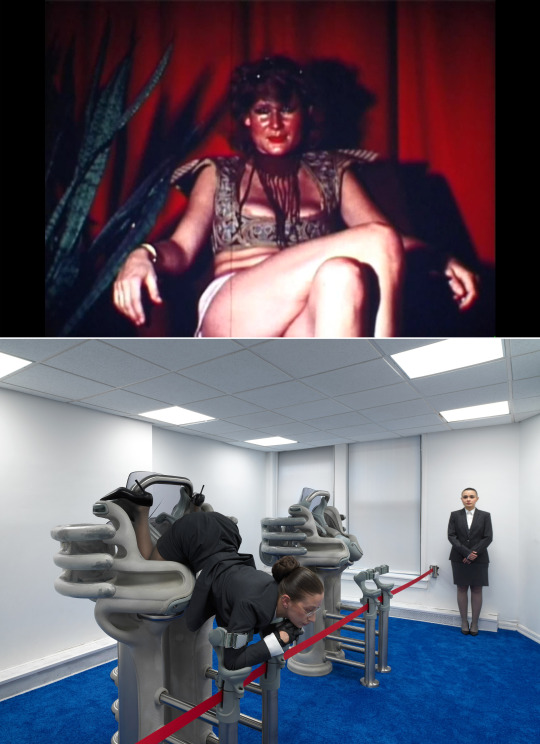
Top, screen capture from Life-death, directed by Katharina Sieverding, 1969/2004. The project consists of 42 one by one meter C-prints in steel frames accompanied by video with the the soundtrack Kraftwerk improvised for it in early 1972. Via. Bottom, installation view and performance, Continental Breakfast by Anna Uddenberg, Premium Economy I & Premium Economy II, 2023, polylactic acid, thermoset polymer resin, electropolished stainless steel, foam boat flooring,leather, chalk paint. Each 64 x 36 x 43 inches. Photograph by Dario Lasagni. On view at Meredith Rosen Gallery, March 18th - April 29, 2023. Via.
--
The subject moves from object to object in order to avoid confronting the fact that it misses the same lost object again and again. The perpetual movement of desire obscures its rootedness in missing the object rather than obtaining it. The subject fails to see that the object is satisfying as an object and not as a possible possession. When the subject invests itself in the fantasy of obtaining the object, it avoids the monotony of the subject’s form of satisfaction. One has dissatisfaction, but one also has a variety of objects that one desires with the promise of a future satisfaction. This future satisfaction never comes, and obtaining objects brings with it an inevitable disappointment. One thought that one was obtaining the impossible lost object, but one ends up with just an ordinary empirical object that pales in comparison. I believed that the piece of chocolate cake that I just ate embodied the lost object itself before I ate it, but after having done so I realize its underwhelming ordinariness.
Todd McGowan, from Capitalism and Desire: The Psychic Cost of Free Markets, 2016. Via.
10 notes
·
View notes
Video
Steam Sunday - Drama On The Blue Ridge por David Blazejewski
Por Flickr:
For Steam Sunday I present this unconventional monochrome silhouette of the Queen of Steam, Norfolk and Western Class J 4-8-4 611, making her round trip from Spencer to Asheville and return via the S Line and the famed Old Fort Loops across the Blue Ridge Mountains. Though she traveled this route many times during her first excursion career in the 1980s and early 90s this trip would turn out to be her one and only time traversing the route during NS' short lived 21st Century Steam program revival. I missed her first rebirth in the 1980s and early 90s and fell in love with her when I watched one of the first railroad programs I'd ever seen on TV...National Geographic's stunning 1984 production, Love Those Trains. She had a brief presence in that show along with other legendary sights of railroading that I had no idea then that I would someday get to see for myself! If you're at all curious and haven't seen that classic program it is a available on YouTube here: youtu.be/JhD-V2tXlYg But I was too young when she was retired for the second time in 1994 and promised myself a few years later that if she came back for a third life I wouldn't miss her! And indeed I didn't. I was there in Spencer when Wick Moorman turned the ceremonial first wrench on the turntable at Spencer in 2014 and then again in 2015 to see her first revenue run as she stormed the Blue Ridge on "home" rails. But the best show ever was the following year when she made this trip from Spencer to Asheville via the NS S-Line and the famous Old Fort Loops. We hiked in on the Point Lookout Trail to this spot between High Ridge Tunnel and McElroy Tunnel. In these views I'm an shooting railroad east as she marches into thr short (77 ft long) McElroy tunnel with her train strung back through the 589 ft Lick Log Tunnel. This is a legendary eastern mountain railroad that was little remarked except by a dedicated few. I always wanted to visit this place and made it on two occasions....and I'm glad I did. Because in May of 2020 thanks the closing of the Linwood hump as part of the continued PSR driven traffic changes all through trains were removed from this route leaving only the daily round trip passage of the Asheville to Bridgewater local, that itself is now in danger with the impending closure of the massive Canton paper mill. But seven years ago there were still two daily pairs of trains that traversed the length of the route along with occasional unit trains, extras, and re-routes. The line is generally flat from Salisbury 111 miles west to Old Fort where suddenly it meets the thrust of the Blue Ridge Mountains and climbs 1000 ft to the Eastern Continental Divide at Ridgecrest, elevation 2535 ft. The top of the grade is only three miles as the crow flies from Old Fort, but it takes about 13 rail miles to get there. There are seven tunnels (including the 1832 ft long one at the summit) on the line and grades as steep as 2.9%. The train is seen here at MP 121 in the third of five found in a mini tunnel district in the span of about 1 1/2 miles. Completed by the Western North Carolina Railroad in 1880 the route ultimately came into the Southern Railway fold and was an important through route for nearly a century and a half. But now times have changed and the future is uncertain. However, the state of North Carolina has longed to bring passenger rail to Asheville via this route, so with the shift of freight traffic away now may be the time. I'm confident the rails here will remain, though the main focus of their economic utility may shift. Only time will tell. To learn more find yourself of a copy the September 2006 issue of Trains magazine. And for a good map showing the remarkable stretch of railroad check out this link from Trains: cs.trains.com/trn/b/staff/archive/2016/01/19/trains-chase... McDowell County, North Carolina Wednesday May 28, 2014
3 notes
·
View notes
Text
"The misfortune which ensued": The defeat at Germantown [Part 2]
Continued from Part 1
This was originally written in October 2016 when I was a research fellow at the Maryland State Archives. It has been reprinted from Academia.edu and my History Hermann WordPress blog.

Illustration of the battle at the Chew House by American artist Christian Schussele
Regardless of who is blamed, the heavy fighting undoubtedly resulted in the death and wounding of many soldiers, leading to a withdrawal. [15] Soldiers were disoriented and confused by heavy morning radiation fog, caused by a 34 degree temperature and humidity, along with the thick black powder smoke from cannons and muskets. This annulled any chance for victory, even though some claimed that they were near to “gaining a compleat Victory.” [16] Washington said that his army would have gained victory if “the fogginess of the Morning” hadn’t prevented the Continental Army “from seeing the advantage we had gained.” [17] In later letters he told General William Heath, his brother John Augustine Washington, and Virginia politician John Page a similar story. He wrote that the hazy day was “overcast by dark & heavy fog,” was “extremely foggy,” and “a thick Fog rendered so infinitely dark at times.” [18] From his viewpoint, this prevented the enemy from sustaining “total defeat” with complications including the Continental Army’s right wing lacking ammunition as the battle dragged on.
After the battle, the Continental Army moved twenty miles way to collect their forces and care for the wounded as the British still held on to Philadelphia. [19] While wounded Marylanders were sent to Reading, Pennsylvania, the Continental Army camped beside the Delaware River before returning to Perkeomen, where they had been stationed before the battle. [20]
George Washington, with the help of other officers and informers, repeatedly tried to assess their losses and that of the British. Washington claimed that the Continental Army suffered “no material loss of Men.” His estimates of those killed, wounded, and missing ranged from 300 to 1,000. [21] He also said that only one artillery piece was lost, along with some captured due to the foggy conditions. In his memoirs, in early nineteenth century, Connecticut Lieutenant James Morris wrote that “many fell in battle and about five hundred of our men were made prisoners of War, who surrendered at discretion.” [22] While the number of casualties from the battle is not known since the official return of Continental causalities from the battle has been lost, the Annual Register, a British parliamentary publication, may be the most reliable, as they reported that 200-300 Continentals were slain, 600 wounded and more than 400 were taken prisoner. [23]
The estimates of British casualties are also not clear. Through the month of October, informers, who were often deserters, told George Washington and other high-level generals that hundreds of wagons came into the city of Philadelphia with wounded soldiers. [24] Those that were wounded reportedly included British army general William Erskine and Hessian general William von Knyphausen, along with 300 to 2,500 British killed and wounded on the bloody day. [25] The Annual Register said that the British losses of wounded, killed, and captured numbered 535, but only 75 were killed and 54 officers taken prisoner. [26] Hence, the estimates by deserters that 2,500 British were casualties may have been exaggerated.
The Continental prisoners from the battle did not fair well. James Morris described how he was captured ten miles away from Germantown after being “continually harassed” by British light infantry and dragoons. [27] Morris, like many others, was taken prisoner, and held in Germantown from October 4 to 5th. He was moved to Philadelphia, where he was a prisoner in Walnut Street Jail. [28] He remained there along with 400 to 500 Continentals in squalid conditions until May 1778. The jail was cold, dark, and desolate, and many prisoners had no bedding, blankets, or general provisions, while others became sick or died. [29]
As the Continentals languished in Philadelphia, officers were accused of being responsible for the defeat and court-martialed as a result. While some believed that the battle reflected “honor upon the General and the Army” and that General Sullivan was a “brave Man,” not everyone agreed. [30] He was partly criticuzed for the friendly fire between Sullivan’s division and Nathaniel Greene‘s troops during the battle, due to the fog. [31] He was likely seen as part of the reason for the “real Injury to America” caused by the defeat: the continued British occupation of Philadelphia. Sullivan defended himself by writing to Washington that after the battle “the field remained his [Howe’s,] the victory was yours” and that Howe could only be defeated by “a Successful General Action.” [32] Others accused of improprieties during the battle included Pennsylvania militia general Thomas Conway, accused later of conspiring against Washington, Captain Abner Crump of Virginia, Nathaniel Greene, Captain Edward Vail of North Carolina, and Captain Adam Stephen of Connecticut. [33] Of these men, Vail, Crump, and Conway were court-martialed and removed from the Continental Army.
Despite the fact that the battle was a defeat for the Continental Army, it served a purpose for the revolutionary cause. John Adams wrote, in July 1778, that “General Washingtons attack upon the Enemy at Germantown” was considered by “the military Gentlemen in Europe” to be the “most decisive Proof that America would finally succeed.” [34]
In the following months, some Marylanders fought along the Delaware River in forts Red Bank and Mifflin. The British were trying to push the Continentals clear out the Delaware River in order to secure Philadelphia. [35] By the end of the campaign, however, their only victory was ensuring that the city was “a good lodging” for the British Army. The rest of Marylanders stayed in camp until they wintered in Wilmington, Delaware and the rest of the army wintered in Valley Forge. [36] In the following years, the First Maryland Regiment would fight in the northern colonies until they joined the Southern campaign in 1780 and 1781. [37]
© 2016-2023 Burkely Hermann. All rights reserved.
#chew house#military history#battle of germantown#revolutionary war#american revolution#british victory#us history#muskets
5 notes
·
View notes
Text
Al Ain: 2024 AFC Champions League Winners

Al Ain: Doubles from Soufiane Rahimi and Kodjo Laba drove United Arab Emirates’ Al Ain FC to win the AFC Champions League™ 2023/24 title following a 5-1 victory over Japan’s Yokohama F. Marinos in the second leg of the final at Hazza bin Zayed Stadium on Saturday.
The J1 League side had won the first leg 2-1 in Yokohama, but a scintillating second-half performance from Al Ain meant the inaugural winners of the AFC Champions League in 2002-03 become also the last team to win it under the current format before the launch of the AFC Champions League Elite next year.
Following their continental triumph, Al Ain become Asia’s fourth representatives at the FIFA Club World Cup 2025, joining Saudi Arabia’s Al Hilal SFC, Japan’s Urawa Red Diamonds and Korea Republic’s Ulsan HD at the US tournament next year.
Already holding a one-goal advantage from the home tie two weeks earlier, the Japanese side came racing out of the blocks trying to add another that could ease the task in front of a packed Hazza bin Zayed Stadium.
Anderson Lopes tested goalkeeper Khaled Eisa within two minutes, but his shot from a tight angle was saved by the UAE international.
With seven knockout stage goals to his name already, the Moroccan showed his quality once again, picking the ball up on the left flank, cutting inside and feinting a shot but instead intelligently finding Yahia Nader who produced a moment of genius, sending a backheel pass that left goalkeeper William Popp in no man’s land and allowing Rahimi to slot home into the empty net for the opener.
Rahimi’s pace continued to be a nuisance for the Marinos defence; the Moroccan was too quick for Shinnosuke Hatanaka, beating the Japanese centre-back to the ball and forcing him to commit a foul inside the box, which translated into a penalty kick following a VAR check. Paraguayan playmaker Alejandro Romero (Kaku) stepped up and slotted home his side’s second.
Al Ain continued to rely on counter attacks and could have been 3-0 on the night seven minutes before the break when Rahimi pushed forward down the wing, beating his markers, but with just the goalkeeper to beat from a narrow angle, the winger’s left-footed finish hit the side netting instead.
The visitors equalised the aggregate score in the 40th minute, as Yan Matheus capitalised on a mistake from Kouame Kouadio to snatch the ball, cut into his left foot and aimed for the bottom far corner where Eisa’s fingertips were unable to stop it nestling into the back of the net to make it 2-1 on the night.
There was still room for more drama before the break as Marinos were reduced to 10 men following a red card to goalkeeper Popp.
Once more it was Rahimi causing trouble; he broke free down the middle at full speed, rounding the goalkeeper who made contact to bring him just outside the penalty box, receiving his marching orders in the process.
Al Ain piled up the pressure after the restart, with head coach Hernan Crespo introducing striker Laba for full-back Saeed Jumaa.
The hosts were rewarded for their attacking endeavors with a third goal midway through the second half, and once more it was Rahimi delivering the goods, while it was Laba who was the focal point of the attack, starting the move which saw defender Eduardo clear the ball, but only as far as Rahimi who controlled it expertly, moving it to his left foot and hammering home for Al Ain’s third.
It was the 27-year-old’s 13th goal of the campaign, matching the record for most goals in a single AFC Champions League season, shared by Guangzhou FC’s Muriqui (2013), FC Seoul’s Adriano (2016) and Al Sadd’s Baghdad Bounedjah (2018).
With 10 minutes of added time given, substitute Laba cemented the win with a fourth goal. Goalkeeper Fuma Shirasaka, who himself had come in the place of Elber following the dismissal of Popp in the first half, committed a horror mistake, missing his attempt to clear Rahimi’s through pass, allowing the Togolese forward to finish comfortably into the empty net for his seventh goal of the campaign, having last scored in the round of 16.
Deep into added time, Laba added his second of the night and his team’s fifth. The 32-year-old fed Kaku down the left and the Paraguayan sent a low effort that looked set for a comfortable Shirasaka save, but the slightest of touches from Laba changed the direction of the ball into the back of the net to seal a 6-3 aggregate victory for the Emiratis.
The emphatic triumph made up for Al Ain’s final defeats to Al Ittihad in 2005 and to Jeonbuk Hyundai Motors in 2016.
0 notes
Text
LISTA DI FILM E SERIE TV CHE HO VISTO FINO AD ORA

• FILM •
Barbie (2023)
Birds of Prey: E la fantasmagorica rinascita di Harley Quinn (2020)
The Suicide Squad: Missione Suicida (2021)
Peter Rabbit 1 (2018)
Peter Rabbit 2: Un birbante in fuga (2021)
Terminal (2018)
Vi presento Christopher Robin (2017)
Ritorno al Bosco dei Cento Acri (2018)
Harry Potter e la pietra filosofale (2001)
Harry Potter e la camera dei segreti (2002)
Harry Potter e il prigioniero di Azkaban (2004)
Harry Potter e il calice di fuoco (2005)
Harry Potter d l'ordine della fenice (2007)
Harry Potter e il principe mezzosangue (2009)
Harry Potter e i doni della morte parte 1 (2010)
Harry Potter e i doni della morte parte 2 (2011)
Scoob! (2020)
Babadook (2014)
Batman Begins (2005)
Il cavaliere oscuro (2008)
Il cavaliere oscuro: il ritorno (2012)
Tom & Jerry (2021)
A dog's purpose (2017)
After 1 (2019)
After 2: Un cuore in mille pezzi (2020)
After 3: Come mondi lontani (2021)
After 4: Anime perdute (2022)
After 5: Amore infinito (2023)
Shrek 1 (2001)
Shrek 2 (2004)
Shrek terzo (2007)
Shrek e vissero felici e contenti (2010)
ll gatto con gli stivali (spin-off, 2011)
Il gatto con gli stivali 2: l'ultimo desiderio (spin-off, 2022)
L'era glaciale (2002)
L'era glaciale 2: Il disgelo (2006)
L'era glaciale 3: L'alba dei dinosauri (2009)
L'era glaciale 4: Continenti alla deriva (2012)
L'era glaciale 5: In rotta di collisione (2016)
L'era glaciale - Le avventure di Buck (2022)
La nuova avventura di Scrat (2002)
Una ghianda è per sempre (2006)
Surviving Sid (2008)
Un continente di risate (2012)
Un continente di risate: Parte 2 (2012)
Scrat-tastrofe cosmica (2015)
Scrat: Catapultato nello spazio (2016)
L'era Natale (2011)
L'era glaciale: La grande caccia alle uova (2016)
L'era glaciale: I racconti di Scrat (2022)
Beverly Hills Chihuahua (2008)
Beverly Hills Chihuahua 2 (2011)
Beverly Hills Chihuahua 3: Viva la fiesta (2012)
Crudelia (2021)
Clifford - Il grande cane rosso (2021)
Rex: Un cucciolo a palazzo (2019)
Nightmare Before Christmas (1993)
Belle & Sebastien (2013)
Belle & Sebastien 2 - L'avventura continua (2015)
Belle & Sebastien 3 – Amici per sempre (2017)
Belle e Sebastien 4 - Next Generation (2022)
Frozen - Il regno di ghiaccio (2013)
Frozen Fever (2015)
Frozen II - Il segreto di Arendelle (2019)
Frozen - Le avventure di Olaf (2017)
Ribelle - The Brave
A Dog's Purpose (2017)
A Dog's Journey (2019)
A Dog's Way Home (2019)
Lyle, Lyle Crocodile (2022)
Rapunzel - L'intreccio della torre (2010)
Rapunzel - Le incredibili nozze (2011)
Raya - L'ultimo drago (2021)
Avatar 2 - La via dell'acqua (2022)
Encanto (2021)
Aladdin (2019)
Aladdin (1992)
Aladdin - Il Ritorno di Jafar (1994)
Aladdin - E il re dei ladri (1996)
Il re leone (1994)
Il re leone (2019)
La sirenetta (1989)
La sirenetta 2 - Ritorno agli abissi (2000)
La sirenetta 3 - Quando tutto ebbe inizio (2003)
Il Principe d'Egitto (1998)
• SERIE TV •
Miss the dragon (2021)
Wednesday (2022)
BoJack Horseman (2014)
Strappare lungo i bordi (2021)
Questo mondo non mi renderà cattivo (2023)
Squid Game (2021)
Inventing Anna (2022)
Totally Spies (2001)
Kim Possible (2002)
The Powerpuff Girls (1998)
Dexter's Laboratory (1995)
Johnny Bravo (1997)
Courage The Cowardly Dog (1996)
Samurai Jack (2001)
Ed, Edd n Eddy (1999)
Codename: Kids Next Door (2002)
Foster's Home for immaginary friends (2004)
Cow & Chicken (1997)
Heartstopper (2022)
Bridgerton: I stagione (2020)
Batman TAS (1992)
Superman TAS (1996)
Spiderman TAS (1994)
H2O: Just Add Water (2006)
Hannah Montana (2006)
I Racconti di Olaf (2021)
Phineas & Ferb (2007)
K.C. Agente Segreto (2015)
Suicide Squad (2016)
Belli di Natur (2021)
The Cuphead Show! (2022)
1 note
·
View note
Text
The only time I will listen to any Taylor swift song is when watching miss continental I think 2016 serenity lopez cunting about
0 notes
Video
youtube
youtube
Tiffany T. Hunter & Jazell Barbie Royale Crownings (Miss continental 2015-2016, Vic Theatre, Chicago, 09/07/15 | 09/05/16)
Brooke Lynn at 1:31 and 2:16 | 3:02
#Tiffany T. Hunter#Jazell Barbie Royale#Crowning#Miss continental#Miss continental 2016#Miss continental 2015#Vic Theatre#Chicago#09/15#09/16#2015#2016#youtube#pageant#Thedraglover#Brooke Lynn Hytes#rupaul's drag race
7 notes
·
View notes
Photo


Jazell Barbie Royale Winner of Miss Continental 2016
#jazell barbie royale#miss continental 2016#miss continental#beauty#beautiful black women#beautiful black trans women
8 notes
·
View notes
Text

Bentley Team M-Sport rips though the 2016 Blancpain GT Series Endurance Cup race at Circuit Paul Ricard FR where their N°8 Bentley Continental GT3 just missed out on a podium with a fourth place finish.
#bentley continental gt3#blancpain gt endurance europe#bentley team m-sport#circuit paul ricard#2016 gtworldcheu
12 notes
·
View notes
Text

Julie Mehretu, Untitled 2, 1999. Private collection. Courtesy of White Cube. © Julie Mehretu

Julie Mehretu, Hineni (E. 3:4), 2018. Centre Pompidou, Paris, Musée national d’art moderne/Centre de création industrielle; gift of George Economou, 2019. © Julie Mehretu. Photography:Tom Powel Imaging
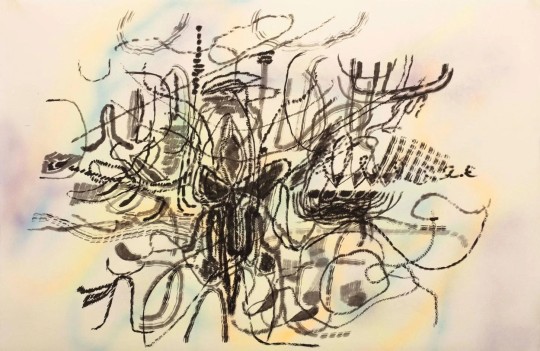
Julie Mehretu, Mind-Wind Field Drawings (quarantine studio, d.h.) #1, 2019-2020. Private collection, courtesy Marian Goodman Gallery New York/Paris. © Julie Mehretu. Photography courtesy Marian Goodman Gallery

Julie Mehretu, Mogamma (A Painting in Four Parts) Part 1, 2012. Guggenheim Abu Dhabi. © Julie Mehretu. Photography: White Cube, Ben Westoby

Julie Mehretu, Conjured Parts (eye), Ferguson, 2016. The Broad Art Foundation, Los Angeles. © Julie Mehretu. Photography: Cathy Carver

Julie Mehretu, Migration Direction Map (large), 1996. Private collection. © Julie Mehretu. Photography: Tom Powel Imaging
At home with artist Julie Mehretu
CAMILLE OKHIO - 25 MAR 2021
Julie Mehretu speaks with the joy and conviction of someone who has had the freedom to investigate all their interests. Curiosity has led her to the myriad topics, objects and moments that inform her work, among them cartography, archaeology, the birth of civilisation and mycology. Since the 1990s, her practice has expanded outwardly in all directions like a spider web. A lack of understanding and preconceived notions among reviewers have often led to her work being flattened – simplified so that it is easily digestible – but in reality, her work is far from a simplistic investigation of any one topic. It encompasses multitudes.
The artist’s recent paintings are mostly large scale, but her early works on paper (often created with multiple layers – one sheet of Mylar on top of another) are as small as a six-inch square. The works often comprise innumerable minuscule markings – tremendous force and knowledge communicated through delicate inkings and streaks. Their layers reveal, rather than obfuscate. And though Mehretu’s creative process springs from a desire to understand herself better, the work itself is in no way autobiographical.
Born in Addis Ababa, Ethiopia, on the tails of a continental rejection of colonialism, and raised there, then in Michigan, Mehretu has a flexible and full-hearted understanding of home. It is not one physical place, but many, all holding equal importance. On 25 March, Mehretu will present her first major retrospective at the Whitney Museum of American Art, with works spanning 1996 to 2019. The institution is an important one for Mehretu, as it played host to several pivotal shows in her youth.
Her exhibition has served as an impetus for Mehretu to look back at her already prolific career, observing and organising the thoughts, questions and answers she has put forth for over two decades. The six years it took to bring this exhibition together proved an incredibly valuable time of reflection, fatefully dovetailing with a year of quarantine.
Wallpaper*: Where are you as we speak?
Julie Mehretu: I’m in my studio on 26th Street, right on the West Side Highway. I’ve worked here for 11 years.
W*: Are there any artists, writers or thinkers that have had a meaningful impact on you?
JM: I don’t know how to answer that because there are literally so many! It’s constantly changing. Right now, Kara Walker, David Hammons, William Pope.L, and younger artists like Jason Moran (who has made amazing work around abstraction). There are so many artists that have been informative and important to me: Frank Bowling, Jack Whitten, Caravaggio.
I also look at a lot of prehistoric work, from as far back as 60,000 years ago, as well as cave paintings from 6th century China and early prehistoric drawings in the caves of Australia.
W*: What’s the most interesting thing you have read, watched or listened to recently?
JM: For the last few weeks I’ve been immersed in Steve McQueen films. I’ve been bingeing on lovers rock music. And a TV show that really moved me was [Michaela Cole’s] I May Destroy You. It’s difficult, but it was really well done and powerful.
Ocean Vuong’s novel On Earth We Are Briefly Gorgeous is amazing. The Mushroom at the End of the World by Anna Lowenhaupt Tsing is a really incredible book too – she studies this mushroom that became a delicacy in Japan in the 7th century. It started growing in deforested areas – it’s in these places destroyed by human beings that these mushrooms survive. [I find it interesting] that this mushroom grows on the edge of precarity and destruction. Like with Black folks, there is a constant aspect of insisting on yourself and reinventing yourself in the midst of constant effort of destruction.
W*: What was the first piece of art you remember seeing? How did you feel about it?
JM: One of the first times I remember being moved by a work of art was looking through my mother’s Rembrandt book. We brought so few things back from Ethiopia and that was one of them. [Particularly] Rembrandt’s The Sacrifice of Isaac. That story is so intense. I was so moved by the light and the skin and the way the paint made light and skin.
W*: Do you travel? If so, what does travel afford you, and what have you missed about it during Covid-19?
JM: I travel a lot, but I haven’t travelled this year. There has been this amazing sense of suspension and a pause in that. I miss travelling, but going to look at art, watching films, reading novels and listening to music is the way I travel now. For instance, I’ve been listening to Afro-Peruvian music and now I want to go to Peru.
Before I know it we will be back in this fast-paced, zooming-around environment – there is something I want to savour by staying here, now, in this time and absorbing as much as I can.
W*: You are said to have a vast collection of objects and images. Walk me through your collection – what areas, materials, makers and things have the largest presence and why?
JM: When you enter our home there is this long hallway. Framed along the wall we have around 20 fluorescent Daniel Joseph Martinez block-printed posters he made with words – almost poems. Our kids grew up reading those. One says ‘Sometimes I can’t breathe’ and another one says ‘Don’t work’, while some are really long.
We also have a great Paul Pfeiffer photograph of one from the Four Horsemen of the Apocalypse series. We have a group of Richard Tuttle etchings right over our dining table. We have an amazing David Hammons body print as well, and my kids’ work is all over the house.
W*: As the daughter of immigrants and an immigrant yourself – how do you conceptualise home and how do you create it?
JM: There were a lot of times I felt very transient – as a student and a young adult, going in and out of school and residency programmes. It always came back to music and food. There are certain flavours, foods, music, smells that you take wherever you go. Also as a mother, I’m building a home for my children. Home becomes something else because of them. They are the core of home now.
W* How has motherhood affected your practice?
JM: I became much more productive when I had kids for several reasons – one is that I felt a lot of pressure to make [work] in the time I wasn’t with them, which of course is unsustainable. A large part of making is not making – thinking and searching.
When I got to work I could get into it much more quickly. Kids grow and change so fast, you feel time is passing so you need to use it. I wasn’t going to stop working, that’s for sure. All women who are pushing in their lives make that choice.
W*: What is your favourite myth and why does it hold importance for you?
JM: Right now I’m reading Greek myths to my ten-year-old. We’ve read them before, but he wanted to read them again. I still read to him at night even though he’s a voracious reader himself.
The myths I remember the most are myths I’ve come across in visual works. Titian’s Diana and Actaeon – I know that myth so well because of his painting. Bernini’s mesmerising sculpture of Apollo and Daphne I saw in Rome, where her body becomes a tree. The leaves are so delicately carved into the marble, it’s a work of incredible beauty. I’ve been considering this deconstructionist approach to mythology. Storytelling becomes this place to interrogate propositions, which is what I think mythology does.
W*: Have you experienced a flattening of your work?
JM: I’m always concerned with flattening and pigeonholing. That is something that happens to artists like us all the time. When I first was working and showing there was a bit of that happening with my work. It was put into the space of cartography or an architectural analysis of it. It was said to be autobiographical work.
The art world tries to consume. There is this desire to flatten and the desire for Black artists to be a reflection of their experience. I don’t think any artist is like that at all. In reality, none of us are flat. We all contain multitudes and are complicated – that has always been the core of the Black radical tradition.
36 notes
·
View notes
Text
"The misfortune which ensued": The defeat at Germantown [Part 1]
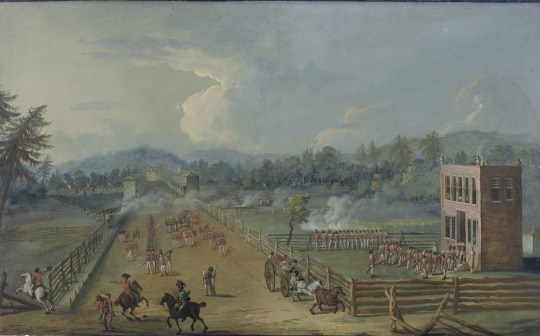
Saverio Xavier della Gatta, an eighteenth-century Neopolitan painter, painted this scene of the Battle of Germantown in 1782, possibly for a British officer. Courtesy of the Museum of the American Revolution.
This was originally written in October 2016 when I was a research fellow at the Maryland State Archives. It has been reprinted from Academia.edu and my History Hermann WordPress blog.
On the morning of October 4, 1777, Continental troops encountered British forces, led by Lord William Howe, encamped at Germantown, Pennsylvania, in Philadelphia’s outskirts. George Washington believed that he had surprise on his side. [1] He had ordered his multiple divisions to march twenty miles from their camp at Perkeomen, with some of the soldiers having neither food or blankets. [2] Washington thought that if the British were defeated he could retake the Continental capital of Philadelphia and reverse his disaster at Brandywine.
Among the men who marched with Washington were 210 Marylanders, including many veterans of the Maryland 400. [3] The seven Maryland regiments, commanded by General John Sullivan, were at the lead of the Continental attack. After marching most of the night, like the rest of the Continental Army, they arrived at Chestnut Hill, three miles from Mount Airy, and encountered a British picket. [4] Later, Sullivan’s division advanced and fought British light infantry in a 15-20 minute clash in an orchard. [5] The Marylanders progressed on the road to Germantown, pushing down fences as they moved forward during this “very foggy morning.” [6] As Enoch Anderson of the Delaware Regiment described it, the scene became bloody in the thick fog:
“Bullets began to fly on both sides,–some were killed,–some wounded, but the order was to advance. We advanced in the line of the division,—the firing on both sides increased,—and what with the thickness of the air and the firing of guns, we could see but a little way before us.” [7]
As the battle moved forward, many Continentals fought at the house of Benjamin Chew, also called Cliveden. The Marylanders advanced upon a small breastwork in Germantown, leading to an intense fight with many lying dead, and they later captured British artillery. [8] Later on, Sullivan ordered the Marylanders, within 400 or 500 yards of the stone house, to retreat since this obstacle had stopped their advance. [9] In response to the hundred or so British troops who came out of the house and a British advance from Lord Charles Cornwallis‘s reinforcements, some Marylanders fired a volley in response. After a British officer was killed, they did not pursue Sullivan’s men. When the smoke cleared, Colonel John Hoskins Stone and General Uriah Forest were wounded while two Marylanders were missing. [10]
Regiments from New Jersey, Connecticut, North Carolina, Virginia, and Pennsylvania also fought in the battle. Like the Marylanders, these Continentals were initially successful in pushing back the British. [11] They were even successful against the Hessian Jägerkorps who had soundly defeated them at the Battle of Brandywine, 24 days earlier. [12] As George Washington recounted, the Continental troops were part of his plan to flank the British, advancing at sunrise, but that they
“retreated a considerable distance, having previously thrown a party into Mr Chews House, who were in a situation not to be easily forced, and had it in their power from the Windows to give us no small annoyance, and in a great measure to obstruct our advance…The Morning was extremely foggy, which prevented our improving the advantages we gained so well, as we should otherwise have done. This circumstance…obliged us to act with more caution and less expedition than we could have wished, and gave the Enemy time to recover from the effects of our first impression…It also occasioned them [the Continentals] to mistake One another for the Enemy, which, I believe, more than any thing else contributed to the misfortune which ensued.” [13]
Clearly, the successes of these Continentals were reversed because they attempted to take the well-defended stone house, which was “shot to pieces” in the intense fighting and friendly fire. Some, such as Connecticut Lieutenant James Morris III recalled that in the “memorable battle of Germantown,” the Continental Army’s victory “in the outsetting seemed to perch on our standards.” [14] He also wrote that the day’s success turned against them due to, in his view, the “misconduct” of General Adam Stephen and “undisciplined” soldiers scattering.
© 2016-2023 Burkely Hermann. All rights reserved.
#the battle of germantown#revolutionary war#american revolution#british victory#muskets#military history#us history
1 note
·
View note
Text
Anonymous asked: I noticed you did post to acknowledge the death of Uderzo, the co-creator of the Asterix comics. I have to ask Tintin or Asterix? Which one do you prefer?
It’s like asking Stones or Beatles? I love both but for different reasons. I would hate to choose between the two.
Both Tintin and Asterix were the two halves of a comic dyad of my childhood. Whether it was India, China, Hong Kong, Japan, or the Middle East the one thing that threads my childhood experience of living in these countries was finding a quiet place in the home to get lost reading Asterix and Tintin.
Even when I was eventually carted off to boarding school back in England I took as many of my Tintin and Asterix comics books with me as I could. They became like underground black market currency to exchange with other girls for other things like food or chocolates sent by parents and other illicit things like alcohol. Having them and reading them was like having familiar friends close by to make you feel less lonely in new surroundings and survive the bear pit of other girls living together.
If you asked my parents - especially my father - he would say Tintin hands down. He has - and continues to have in his library at home - a huge collection of Tintin comic books in as many different language translations as possible. He’s still collecting translations of each of the Tintin books in the most obscure languages he can find. I have both all the Tintin comic books - but only in English and French translations, and the odd Norwegian one - as well as all the Asterix comic books (only in English and French).
Speaking for myself I would be torn to decide between the two. Each have their virtues and I appreciate them for different reasons.
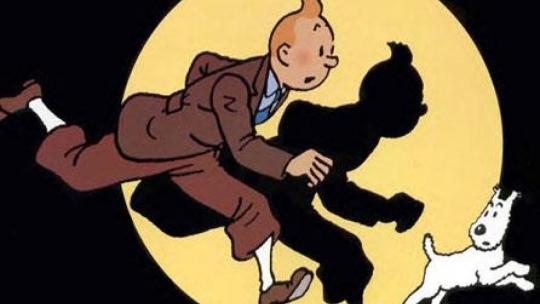
Tintin was truly about adventure that spoke deeply to me. Tintin was always a good detective story that soon turned to a travel adventure. It has it all: technology, politics, science and history. Of course the art is more simpler, but it is also cleaner and translates the wondrous far-off locations beautifully and with a sense of awe that you don’t see in the Asterix books. Indeed Hergé was into film-noir and thriller movies, and the panels are almost like storyboards for The Maltese Falcon or African Queen.
The plot lines of Tintin are intriguing rather than overly clever but the gallery of characters are much deeper, more flawed and morally ambiguous. Take Captain Haddock I loved his pullover, his strangely large feet, his endless swearing and his inability to pass a bottle without emptying it. He combined bravery and helplessness in a manner I found irresistible.
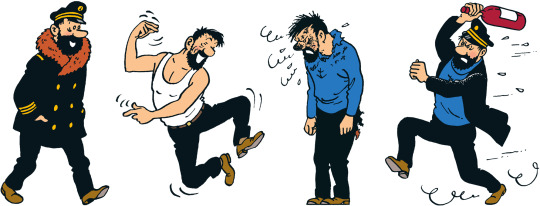
I’ve read that there is a deeply Freudian reading to the Tintin books. I think there is a good case for it. The Secret of the Unicorn and Red Rackham's Treasure are both about Captain Haddock's family. Haddock's ancestor, Sir Francis Haddock, is the illegitimate son of the French Sun King – and this mirrors what happened in Hergé's family, who liked to believe that his father was the illegitimate son of the Belgian king. This theme played out in so many of the books. In The Castafiore Emerald, the opera singer sings the jewel song from Faust, which is about a lowly woman banged up by a nobleman – and she sings it right in front of Sir Francis Haddock, with the captain blocking his ears. It's like the Finnegans Wake of the cartoon. Nothing happens - but everything happens.
Another great part is that the storylines continue on for several albums, allowing them to be more complex, instead of the more simplistic Asterix plot lines which are always wrapped up nicely at the end of each book.

Overall I felt a great affinity with Tintin - his youthful innocence, wanting to solve problems, always resourceful, optimistic, and brave. Above all Tintin gave me wanderlust. Was there a place he and Milou (Snowy) didn’t go to? When they had covered the four corners of the world Tintin and Milou went to the moon for heaven’s sake!
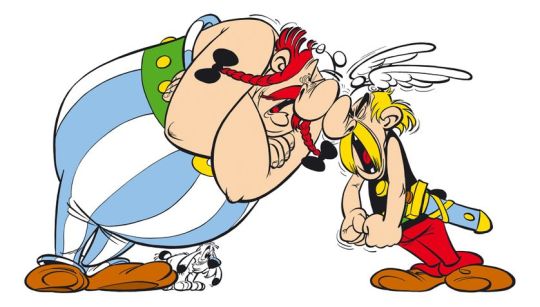
What I loved about Asterix was the style, specifically Uderzo’s visual style. I liked Hergé’s clean style, the ligne claire of his pen, but Asterix was drawn as caricature: the big noses, the huge bellies, often being prodded by sausage-like fingers. This was more appealing to little children because they were more fun to marvel at.
In particular I liked was the way Uderzo’s style progressed with each comic book. The panels of Asterix the Gaul felt rudimentary compared to the later works and by the time Asterix and Cleopatra, the sixth book to be published, came out, you finally felt that this was what they ought to look like. It was an important lesson for a child to learn: that you could get better at what you did over time. Each book seemed to have its own palette and perhaps Uderzo’s best work is in Asterix in Spain.
I also feel Asterix doesn’t get enough credit for being more complex. Once you peel back the initial layers, Asterix has some great literal depth going on - puns and word play, the English translation names are all extremely clever, there are many hidden details in the superb art to explore that you will quite often miss when you initially read it and in a lot of the truly classic albums they are satirising a real life country/group/person/political system, usually in an incredibly clever and humorous way.
What I found especially appealing was that it was also a brilliant microcosm of many classical studies subjects - ancient Egypt, the Romans and Greek art - and is a good first step for young children wanting to explore that stuff before studying it at school.
What I discovered recently was that Uderzo was colour blind which explains why he much preferred the clear line to any hint of shade, and it was that that enabled his drawings to redefine antiquity so distinctively in his own terms. For decades after the death of René Goscinny in 1977, Uderzo provided a living link to the golden age of the greatest series of comic books ever written: Paul McCartney to Goscinny’s John Lennon. Uderzo, as the Asterix illustrator, was better able to continue the series after Goscinny’s death than Goscinny would have been had Uderzo had died first, and yet the later books were, so almost every fan agrees, not a patch on the originals: very much Wings to the Beatles. What elevated the cartoons, brilliant though they were, to the level of genius was the quality of the scripts that inspired them. Again and again, in illustration after illustration, the visual humour depends for its full force on the accompaniment provided by Goscinny’s jokes.
Here below is a great example:
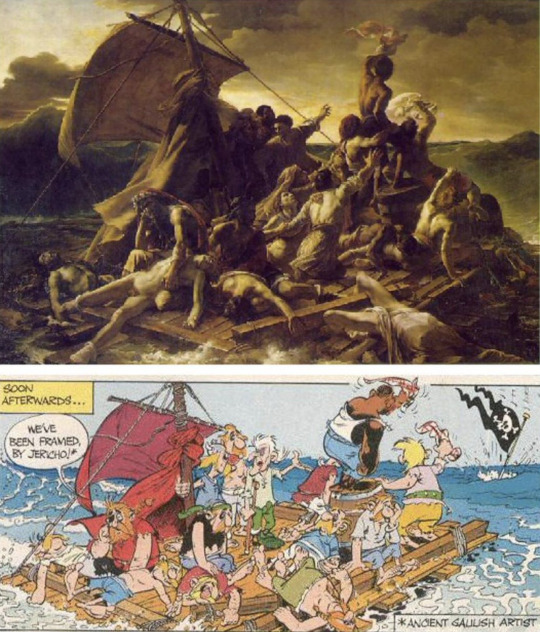
There’s a lot of genius in this. Uderzo copied Theodore Géricault’s iconic ‘Raft of the Medusa’ 1818 painting in ‘Asterix The Legionary’. The painting is generally regarded as an icon of Romanticism. It depicts an event whose human and political aspects greatly interested Géricault: the wreck of a French frigate, Medusa, off the coast of Senegal in 1816, with over 150 soldiers on board. But Anthea Bell’s translation of Goscinny’s text (including the pictorial and verbal pun ‘we’ve been framed, by Jericho’) is really extraordinary and captures the spirit of the Asterix cartoons perfectly.
This captures perfectly my sense of humour as it acknowledges the seriousness of life but finds humour in them through a sly cleverness and always with a open hearted joy. There is no question that if humour was the measuring yard stick then Asterix and not Tintin would win hands down.
It’s also a mistake to think that the world of Asterix was insular in comparison to the amazing countries Tintin had adventures. Asterix’s world is very much Europe.
Every nationality that Asterix encounters is gently satirised. No other post-war artistic duo offered Europeans a more universally popular portrait of themselves, perhaps, than did Goscinny and Uderzo. The stereotypes with which he made such affectionate play in his cartoons – the haughty Spaniard, the chocolate-loving Belgian, the stiff-upper-lipped Briton – seemed to be just what a continent left prostrate by war and nationalism were secretly craving. Many shrewd commentators believe that during the golden age when Goscinny was still alive to pen the scripts, that it was a fantasy on French resistance during occupation by Nazi Germany. Uderzo lived through the occupation and so there is truth in that. Perhaps this is why the Germans are the exceptions as they are treated unsympathetically in Asterix and the Goths, and why quite a few of the books turn on questions of loyalty and treachery.

Even the British are satirised with an affection that borders on love: the worst of the digs are about our appalling cuisine (everything is boiled, and served with mint sauce, and the beer is warm), but everything points to the Gauls’ and the Britons’ closeness. They have the same social structure, even down to having one village still holding out against the Romans; the crucial and extremely generous difference being that the Britons do not have a magic potion to help them fight. Instead they have tea, introduced to them by Getafix, via Asterix, which gives them so much of a psychological boost that it may as well have been the magic potion.

I re-read ‘Asterix in Britain’ (Astérix chez les Bretons) in the light of the 2016 Brexit referendum result and felt despaired that such a playful and respectful portrayal of this country was not reciprocated. Don’t get me wrong I voted for Brexit but I remain a staunch Europhile. It made me violently irritated to see many historically illiterate pro-Brexit oiks who mistakenly believed the EU and Europe were the same thing. They are not. One was originally a sincere band aid to heal and bring together two of the greatest warring powers in continental Europe that grotesquely grew into an unaccountable bureaucratic manager’s utopian wet dream, and the other is a cradle of Western achievement in culture, sciences and the arts that we are all heirs to.
What I loved about Asterix was that it cut across generations. As a young girl I often retreated into my imaginary world of Asterix where our family home had an imaginary timber fence and a dry moat to keep the world (or the Romans) out. I think this was partly because my parents were so busy as many friends and outsiders made demands on their time and they couldn’t say no or they were throwing lavish parties for their guests. Family time was sacred to us all but I felt especially miffed if our time got eaten away. Then, as I grew up, different levels of reading opened up to me apart from the humour in the names, the plays on words, and the illustrations. There is something about the notion of one tiny little village, where everybody knows each other, trying to hold off the dark forces of the rest of the world. Being the underdog, up against everyone, but with a sense of humour and having fun, really resonated with my child's eye view of the world.
The thing about both Asterix and Tintin books is that they are at heart adventure comics with many layers of detail and themes built into them. For children, Asterix books are the clear winner, as they have much better art and are more fantastical. Most of the bad characters in the books are not truly evil either and no-one ever dies, which appeals hugely to children. For older readers, Tintin has danger, deeper characters with deep political themes, bad guys with truly evil motives, and even deaths. It’s more rooted in the real world, so a young reader can visualise themselves as Tintin, travelling to these real life places and being a hero.
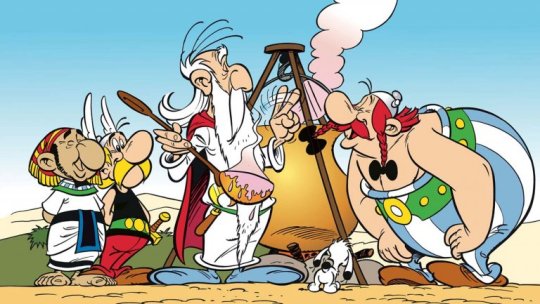
As I get older and re-read Asterix and Tintin from time to time I discover new things.
From Asterix, there is something about the notion of one tiny little village, where everybody knows each other, trying to hold off the dark forces of the rest of the world. Being the underdog, up against everyone, but with a sense of humour and having fun, really resonated with my child's eye view of the world. In my adult world it now makes me appreciate the value of family, friends, and community and even national identity. Even as globalisation and the rise of homogenous consumerism threatens to envelope the unique diversity of our cultures, like Asterix, we can defend to the death the cultural values that define us but not through isolation or by diminishing the respect due to other cultures and their cultural achievements.

From Tintin I got wanderlust. This fierce even urgent need to travel and explore the world was in part due to reading the adventures of Tintin. It was by living in such diverse cultures overseas and trying to get under the skin of those cultures by learning their languages and respecting their customs that I realised how much I valued my own heritage and traditions without diminishing anyone else.
So I’m sorry but I can’t choose one over the other, I need both Asterix and Tintin as a dyad to remind me that the importance of home and heritage is best done through travel and adventure elsewhere.
Thanks for your question.
298 notes
·
View notes
Text
FilAms referring to the Philippines as the acronym PI while they are calling homelanders for the use of Filipinx and Pinxy is peak irony. That is without adding these two facts: the letter F is a loaned letter in Tagalog from the oppressors (and its corresponding phoneme too) and that the demonym is an appellation to Felipe II of Spain. And for someone like me who reads and writes in Baybayin since age 15, to write a Baybayin X seems like a dark humor scene in a Taika Waititi comedy. (Yes, I do Baybayin shiz for fun, but not as serious as Kristian Kabuay and NordenX.)
I first encountered PI among FilAms during Christmas vacation 2002 in LA; and Pilipinx when I joined the theatrical production of a FilAm musical at CalState East Bay in 2016. I understand that it is their culture and I respect it, and I assimilate. I easily assimilate with what I call my Nickelodeon voice, which I have acquired from when jailbroken cable services became a thing in Mega Manila and through my theatre background. But when in Rome, we live the Roman way, so as the Santa Mesa-born foreigner, I have to hide that dark laughter every single time someone uses PI.
But of course, 2020 had to make us see PI-using FilAms pressuring homelander to use Filipinx, citing political correctness and gender neutrality (while white American Pemberton, the killer of Filipino transwoman Jennifer Laude, was given an absolute pardon by Duterte).
So, let us start my TEDtalk.
P.I. is a colloquial acronym for Putanginamo (the equivalent of Fuck You) used by conservative Filipinos who probably are only retelling a story.
Tsismosa 1: “Minura ni Aling Biring si Ka Boying.” (Aling Biring cursed Ka Boying)
Tsismosa 2: “Oh? Ano ika?” (Really? What did she say?)
Tsismosa 1: “Malutong at umaatikabong PI.” (A hard and surging PI.)
Then I imagine PI as the curse when FilAms say some sentences:
“Are you flying back to Putangina?”
“I miss Putangina. We went to Boracay.”
“Duterte is President of Putangina.”
But it’s fine with me. I understand they mean well and I know that Americans, as first world as they are, have poor grasp of history. It’s a little sad though that FilAms have not always been reminded of this special footnote in the history of the United States:
P.I. stands for Philippine Islands. That’s the colonial name of the Philippines as a commonwealth republic under the United States, which the republic stopped using when the 1935 Constitution was enacted in 1946. Yes, in case people are forgetting, the Philippines has long been a state with full sovereignty recognized by the United Nations (of which we are a founding member of and wherein Carlos Romulo served as President) and recognized by Shaider Pulis Pangkalawakan.
Also, RP is used to refer to the Republic of the Philippines before the use of the standard two-letter country code PH.
I’m not saying FilAms should stop using PI to refer to the Philippines but I’m saying that the roots of that practice is from American oppression that homelanders have already cancelledttt.
Our oldest bank in the Philippines is BPI. It stands for Bank of the Philippine Islands, originally named El Banco Español Filipino de Isabel II because it was founded during Queen Isabella II’s reign. It was a public bank by then; perhaps comparable to the Federal Reserve. Upon its privatization during the American occupation, the bank started using BPI for the sake of branding because it was the Americans who christened us with P.I. (I have a theory that Manila was a character in Money Heist because the Royal Mint of Spain used to have a branch in the Philippines and operated very closely with BPI. And my other supernatural theory is that our translation of peso which is ‘piso’ affects our economy. ‘Piso’ means ‘floor’ or ‘flat’ in Spanish.)
Now, going back. To me, P.I. is more appropriate an acronym for the ethnic group of Pacific Islanders. I don't think I need to explain further why. These would be the natives of Hawai’i, Guam, Tuvalu, Kiribati, and other islands in the Oceania continent, and maybe even New Zealand. If a curious FilAm raises a question of whether Filipinos are Pacific Islanders or Asians or Hispanics, the answer is long but easy to understand.
The Filipinos live in a group of islands within the Pacific Plate. The Philippines is an Asian country, following conventions of geopolitical continental borders from the other. We are Hispanics by virtue of being under Spain for three fucking centuries. And Teresita Marquez is Reina Hispanoamericana because why not? (We could’ve been a part of America still if not for the efforts of Quezon.) So, the quick answer is that the Filipino is all of it.
Yes, the Filipinos have an affinity with the Pacific through nature and geography. Think of the earthquakes, volcanoes, flora and fauna, and the coconuts. And they even look like us. The earlier inhabitants of the archipelago were Pacific Islanders who were introduced to Hinduism and Buddhism as being closer to the cradles of civilization India and China. Then, the Islamic faith has grown along with the rise of the kingdoms and polities in Southeast Asia. The Spaniards arrived in the archipelago, to an already civilized Islamic polity - too civilized that they understood how diplomacy is necessary in war. We knew that it resulted to the defeat and death of Magellan who was fighting for Rajah ‘Don Carlos’ Humabon. Then came the 333 years of being under Spain AND (sic) the Catholic Church which made us more Hispanic. Our Austronesian/Malayo-Polynesian languages (Tagalog, Bisaya, Kapampangan, Ilocano, Bikol, Waray, Cuyonon, etc.) have kept our Asian identity intact - unlike Latin American countries where the official language of each is one of the Romance languages; thus "Latin".
(It is only towards the end of that 333-year Spanish rule that the 'Filipino' emerged to be something the oppressed could claim, and for that we thank the poet in Jose Rizal. I see a parallel in how Christians claimed the cross, the former symbol of criminals in Jewish tradition, to become the symbol of God’s love and salvation through Jesus. Wow. That’s so UST of me. Lol.)
You add into the mix that our diaspora is so large and identifiable, the data gatherers decided to mark the tables with “Filipino” - too Asian to be Hispanic and Pacific, too Pacific to be Hispanic and Asian, and too Hispanic to be Asian and Pacific.
What many FilAms do not realize everyday is that unlike the words Blacks, Latinx, Asians, or Pacific Islanders, or Hispanics, the word Filipino is not just a word denoting an ethnic group. At its highest technical form, the word Filipino is a word for the citizenship of a sovereign nation, enshrined in the constitution of a free people whose history hinges on the first constitutional republic in Asia.
By state, we mean a sovereign nation and not a federal state. (Well, even with Chinese intervention, at the very least we try.)
By state, we mean we are a people with a national territory, a government, and a legal system inspired by the traditions of our ancestors and oppressors. It may be ugly, but it is ours, and we have the power to change it.
This one may be as confusing as Greek-Grecian-Greco-Hellenic-Hellene, but let’s examine the word 'Filipino' further when placed side by side with related words.
*Pilipinas is the country; official name: Republika ng Pilipinas. It is translated into English as “Philippines”; official name: Republic of the Philippines. Spanish translates it into “Filipinas”, the Germans “Philippinen”, the French “Les Philippines”, the Italians “Filippine”.
*Pilipino refers to the people. It is translated into English as Filipino. The plural forms are ‘mga Pilipino’ and ‘Filipinos’.
*Philippine is an English adjective relating to the Philippines, commonly used for official functions. It may be used as an alternative to the other western adjective ‘Filipino’ but the interchangeability is very, very nuanced. Filipino people not Philippine people. Filipino government and Philippine government. Philippine Embassy, Filipino embassy, not Filipino Embassy. Tricky, eh?
*Filipino also refers to the official language of the state (which is basically Tagalog).
*Filipiniana refers to Philippine-related books and non-book materials (cultural items, games, fashion, etc.) which could be produced by Filipinos or non-Filipinos, inside or outside the Philippines.
*Pinoy is a colloquial gender-neutral demonym; comparable to how New Zealanders use the word Kiwi.
The demonym Filipino has evolved from that of referring only to Spaniards in the Philippines into becoming the term for the native people who choose to embrace the identity of a national.
It started from when Jose Rizal wrote his poem “A la juventud filipina” and he emerged as an inspiration to the Philippine Revolution through Andres Bonifacio’s leadership. (But take note of ‘filipina’ because ‘juventud’ is a feminine word in Spanish.)
Today, no less than the 1987 Philippine Constitution, which was neither written by Hamilton nor a group of straight white men but by people of different faiths, genders, disabilities, and skin colors, in its first five words in both Filipino and English versions read: "Kami, ang nakapangyayaring sambayanang Pilipino", translated as "We, the sovereign Filipino people” validates the legitimacy of the word as gender-neutral, alive, aware and awake with our history of struggles.
Article 14 Section 7 of the current Constitution says Filipino is the national language. And while I agree that it is not really a real language but an alias for Tagalog, it is a conscientious codification of a social norm during the time of Manuel Quezon as he is aiming for the world to recognize the unified Filipinos as a sovereign people. People. Not men. Not heterosexual men. People.
It is a non-issue for the homeland Filipino that the word Filipino refers to the people and the language. But FilAms are concerned of political correctness due to an understandable cultural insecurity also felt by other non-whites in the US. And there is added confusion when FilAms pattern the word Filipino after the patriarchal Spanish language, without learning that the core of the grammars of Philippine languages are gender-neutral. The Tagalog pronoun "siya" has no gender. "Aba Ginoong Maria" is proof that the Tagalog word 'ginoo' originally has no gender. Our language is so high-context that we have a fundamental preposition: “sa”.
It is difficult to be a person of color in the United States especially in these times of the white supremacy’s galling resurgence. Well, it’s not like they have been gone, but this time, with Trump, especially, it’s like the movement took steroids and was given an advertising budget. But for FilAms to force Filipinx into the Philippines, among homeland Filipinos, is a rather uneducated move, insensitive of the legacies of our national heroes and magnificent leaders.
The FilAm culture and the Filipino homeland culture are super different, nuanced. It’s a different dynamic for a Latinx who speak Spanish or Portuguese or whatever their native language is - it reminds entitled white English-speaking America of their place in the continent. It should remind a racist white man whose roots hail from Denmark that his house in Los Angeles stands on what used to be the Mexican Empire.
Let’s use a specific cultural experience by a Black person for example: the black person not only has Smith or Johnson for their last name, but there is no single easy way for them to retrieve their family tree denoting which African country they were from, unless the Slave Trade has data as meticulous as the SALN forms. Let’s use a specific cultural experience by a Mexican-American with Native American heritage: the person is discriminated by a white US Border Patrol officer in the border of Texas. Texas used to be part of Mexico. Filipinos have a traceable lineage and a homeland.
Filipinos and FilAms may be enjoying the same food recipes, dancing the same cultural dance for purposes of presentations every once in a while, but the living conditions, the geography, the languages, social experiences, the human conditions are different, making the psychology, the politics, the social implications more disparate than Latinxs like Mexicans and Mexican Americans.
I don’t know if it is too much advertising from state instruments or from whatever but FilAms don’t realize how insensitive they have become in trying to shove a cultural tone down the throats of the citizens of the republic or of those who have closer affinity to it. And some Filipino homelanders who are very used to accommodating new global social trends without much sifting fall into the trap of misplaced passions.
To each his own, I guess. But FilAms should read Jose Rizal’s two novels, Carlos Romulo’s “I am a Filipino”, materials by Miriam Defensor Santiago (not just the humor books), speeches of Claro Recto, books by historians Gregorio Zaide, Teodoro Agoncillo, Renato Constantino, Nick Joaquin, Regalado Trota Jose, Fidel Villaroel, Zeus Salazar, Xiao Chua, and Ambeth Ocampo, and really immerse themselves in the struggle of the Filipino for an unidentifiable identity which the FilAms confuse for the FilAm culture. That’s a little weird because unlike Blacks and the Latinx movement, the Philippines is a real sovereign state which FilAms could hinge their history from.
I have to be honest. The homelanders don’t really care much about FilAm civil rights heroes Philip Vera Cruz and Larry Itliong, or even Alice Peña Bulos, because it was a different fight. But the media can play a role sharing it, shaping consensus and inadvertently setting standards. (But it’s slightly different for Peña Bulos, as people are realizing she was already a somebody in the Philippines before becoming a who’s who in the US, which is somehow similar to the case of Lea Salonga who was not only from the illustrious Salonga clan, but was also already a child star.) How much do Filipino millennials know about Marcoses, Aquinos? Maybe too serious? Lol. Then, let’s try using my favorite examples as a couch potato of newer cultural materials accessible to FilAms - cultural materials on television and internet.
FilAms who only watched TFC wondered who Regine Velasquez was when ABSCBN welcomed her like a beauty queen. Those with the GMA Pinoy TV have a little idea. But they did not initially get why the most successful Filipino artist in the US, Lea Salonga, does not get that level of adulation at home that Velasquez enjoys. Was it just Regine’s voice? No. Well, kinda, maybe, because there is no question that she is a damn good singer with God knows how many octaves, but it is the culture she represents as a probinsyana who made it that far and chose to go back home and stay - and that’s already a cultural nuance Filipinos understand and resonate with, without having to verbalize because the Philippines is a high-context culture in general, versus the US which is low-context culture in general. I mean, how many Filipinos know the difference of West End and Broadway, and a Tony and an Olivier? What does a Famas or a Palanca mean to a FilAm, to a Filipino scholar, and to an ordinary Filipino? Parallel those ideas with "Bulacan", "Asia", "Birit", "Songbird".
You think Coach Apl.de.Ap is that big in the Philippines? He was there for the global branding of the franchise because he is an American figure but really, Francis Magalona (+) and Gloc9 hold more influence. And speaking of influence, do FilAms know Macoy Dubs, Lloyd Cadena (+) and the cultures they represent? Do FilAms know Aling Marie and how a sari-sari store operates within a community? Do FilAms see the symbolic functions of a makeshift basketball (half)courts where fights happen regularly? How much premium do FilAms put on queer icons Boy Abunda, Vice Ganda? Do FilAms realize that Kris Aquino's role in Crazy Rich Asians was not just to have a Filipino in the cast (given that Nico Santos is already there) but was also Kris Aquino's version of a PR stunt to showcase that Filipinos are of equal footing with Asian counterparts if only in the game of 'pabonggahan'? Will the FilAms get it if someone says ‘kamukha ni Arn-arn’? Do FilAms see the humor in a Jaclyn Jose impersonation? Do FilAms even give premiums to the gems Ricky Lee, Peque Gallaga, Joel Lamangan, Joyce Bernal, Cathy Garcia Molina, and Jose Javier Reyes wrote and directed? (And these are not even National Artists.) How about AlDub or the experience of cringing to edgy and sometimes downright disgusting remarks of Joey De Leon while also admiring his creative genius? Do FilAms understand the process of how Vic Sotto became ‘Bossing’ and how Michael V could transform into Armi Millare? Do FilAms get that Sexbomb doesn’t remind people of Tom Jones but of Rochelle? Do FilAms get that dark humor when Jay Sonza’s name is placed beside Mel Tiangco’s? What do FilAms associate with the names ‘Tulfo’, ‘Isko’, ‘Erap’, ‘Charo’, ‘Matet’, ‘Janice’, ‘Miriam’, ‘Aga’, ‘Imelda’ and ‘Papin’? Do FilAms get that majority of Filipinos cannot jive into Rex Navarette’s and Jo Koy’s humor but find the comic antics of JoWaPao, Eugene Domingo, Mr Fu, Ryan Rems, and Donna Cariaga very easy to click with? Do FilAms know Jimmy Alapag, Jayjay Helterbrand, Josh Urbiztondo? Oh wait, these guys are FilAms. Lol. Both cultures find bridge in NBA, but have these FilAms been to a UAAP, NCAA, or a PBA basketball game where the longstanding rival groups face each other? Do FilAms know the legacy of Ely Buendia and the Eraserheads? Do FilAms know about Brenan Espartinez wearing this green costume on Sineskwela? Do FilAms know how Kiko Matsing, Ate Sienna, Kuya Bodjie helped shape a generation of a neoliberal workforce?
That list goes on and on, when it comes to this type of Filipiniana materials on pop culture, and I am sure as Shirley Puruntong that while the homeland Filipino culture is not as widespread, it has depth in its humble and high-context character.
Now, look at the practical traffic experiences of the homelanders. People riding the jeepneys, the tricycles, the MRT/LRT, the buses, and the kolorum - the daily Via Crucis of Mega Manila only Filipinos understand the gravity of, even without yet considering the germs passed as the payments pass through five million other passengers before reaching the front. Add the probinsyas, people from periphery islands who cross the sea to get good internet connections or do a checkup in the closest first-class town or component city. Do FilAms realize that the largest indoor arena in the world is built and owned by Iglesia ni Cristo, a homegrown Christian church with a headquarters that could equal the Disney castle?
Do FilAms know the experience as a tourist's experience or as an experience a homelander want to get away from or at least improved?
Do FilAms understand how much an SM, a Puregold, or a Jollibee, Greenwich, Chowking branch superbly change a town and its psychology and how it affects the Pamilihang Bayan? Do FilAms realize that while they find amusement over the use of tabo, the homelanders are not amused with something so routinary? Do FilAms realize how Filipinos shriek at the thought that regular US households do not wash their butts with soap and water after defecating?
Do FilAms understand the whole concept of "ayuda" or SAP Form in the context of pandemic and politics? The US has food banks, EDDs, and stubs - but the ayuda is nowhere near the first world entitlements Filipinos in the homeland could consider luxury. But, that in itself is part of the cultural nuance.
Do FilAms know that Oxford recognizes Philippine English as a diction of the English language? While we’ve slowly grown out of the fondness for pridyider and kolgeyt, do FilAms know how xerox is still used in the local parlance? Do FilAms know how excruciating it is to read Panitikan school books Ibong Adarna, Florante at Laura under the curriculum, and how light it is to read Bob Ong? Do FilAms realize that Jessica Zafra, with all her genius, is not the ordinary homelander’s cup-of-tea?
Do FilAms know that Filipinos do not sound as bad in English as stereotypes made them believe? Do FilAms really think that Philippines will be a call center capital if our accents sound like the idiolects of Rodrigo Duterte’s or Ninoy Aquino’s Philippine English accent? Do FilAms realize how Ninoy and Cory speak English with different accents? Lea Salonga's accent is a thespian's accent so she could do a long range like that of Meryl Streep if she wants to so she wouldn't be a good example. Pacquiao's accent shows the idiolect unique to his region in southern Philippines. But for purposes of showing an ethnolinguistic detail, I am using President Cory Aquino’s accent when she delivered her historic speech in the US Congress as a more current model of the Philippine English accent.
Do FilAms bother themselves with the monsoons, the humidity, and the viscosity of sweat the same way they get bothered with snowstorms, and heat waves measured in Fahrenheit?
Do FilAms know that not only heterosexual men are accepted in the Katipunan? Do FilAms even know what the Katipunan is? Do FilAms realize that the Philippines had two female presidents and a transwoman lawmaker? Do FilAms take “mamatay nang dahil sa’yo” the same way Filipinos do? Do FilAms know the ground and the grassroots? Do FilAms know the Filipino culture of the homeland?
These are cultural nuances FilAms will never understand without exposure of Philippine society reflected from barrio to lalawigan, from Tondo to Forbes Park. It goes the same way with Filipinos not understanding the cultural weight of Robert Lopez and the EGOT, or Seafood City, or Lucky Chances Casino, or what Jollibee symbolizes in New York, unless they are exposed.
The thing though is that while it is harder for FilAms to immerse to the homeland culture, it is easier for homeland culture to immerse into the FilAm’s because America’s excess extends to the propagation of its own subcultures, of which the FilAm’s is one.
We’re the same yet we’re different. But it should not be an issue if we are serious with embracing diversity. There should not be an issue with difference when we could find a common ground in a sense of history and shared destiny. But it is the burden of the Filipinos with and in power to understand the situation of those who have not.
Nuances. Nuances. Nuances.
And while I believe that changing a vowel into X to promote gender-neutrality has a noble intention, there is no need to fix things that are not broken. Do not be like politicians whose acts of service is to destroy streets and roads and then call for its renovation instead of fixing broken bridges or creating roads where there are none.
The word ‘Filipino’ is not broken. Since Rizal’s use of the term to refer to his Malayan folks, the formal process of repair started. And it is not merely codified, but validated by our prevailing Constitution, which I don’t think a FilAm would care to read, and I cannot blame them. What's in it for a regular FilAm? They wouldn’t read the US Constitution and the Federalist Papers; what more the 1987 Saligang Batas?
The bottomline of my thoughts on this particular X issue is that FilAms cannot impose a standard for Filipinos without going through a deeper, well-thought-out, more arduous process, most especially when the card of gender neutrality and political correctness are raised with no prior and deeper understanding of what it is to be a commoner in the homeland, of what it is to be an ordinary citizen in a barangay, from Bayan ng Itbayat, Lalawigan ng Batanes to Bayan ng Sitangkai, Lalawigan ng Sulu. It is very dangerous because FilAms yield more influence and power through their better access to resources, and yet these do not equate to cultural awareness.
Before Rizal’s political philosophy of Filipino, the ‘Filipino’ refers to a full-blooded Spaniard born in the Philippines, and since Spain follows jus sanguinis principle of citizenship, back then, ‘Filipino’ is as Spaniard as a ‘Madrileño’ (people in Madrid). The case in point is Marcelo Azcárraga Palmero - the Filipino Prime Minister of Spain.
But the word ‘Filipino’ was claimed by Rizal and the ilustrados to refer to whom the Spaniards call ‘indio’. The term was then applied retroactively to those who helped in the struggle. It was only later that Lapu-Lapu, Francisco Dagohoy, Gabriela and Diego Silang, Sultan Kudarat, Lorenzo Ruiz, and GOMBURZA were called Filipinos.
The word 'Filipino' was long fixed by the tears and sweat of martyrs through years of bloody history in the hands of traitors within and oppressors not just of the white race. The word Filipino is now used by men, women, and those who do not choose to be referred to as such who still bears a passport or any state document from the Republic of the Philippines. Whether a homelader is a Kapuso, Kapamilya, Kapatid, DDS, Dilawan, Noranian, Vilmanian, Sharonian, Team Magnolia, Barangay Ginebra, Catholic, Muslim, Aglipayan, Iglesia, Victory, Mormon, IP, OP, SJ, RVM, SVD, OSB, OSA, LGBTQQIP2SAA, etc., the word 'Filipino' is a constant variable in the formula of national consciousness.
Merriam-Webster defines Filipina as a Filipino girl or woman. Still a Filipino. Remember, dictionaries do not dictate rules. Dictionaries provide us with the meaning. To me, the word Filipina solidified as a subtle emphasis to the Philippines as a matriarchal country faking a macho look. But that’s not saying the word Filipino in the language is macho with six-pack.
The word Filipino is not resting its official status on the letter O but in its quiddity as a word and as an idea of a sovereign nation. The words Pilipino, Filipino, and Pinoy are not broken. What is broken is the notion that a Filipino subculture dictates the standard for political correctness without reaching the depth of our own history.
If the Filipinx-Pinxy-Pilipinx movement truly suits the Filipino-American struggle, my heart goes out for it. But my republic, the Philippines, home of the Filipino people, cradle of noble heroes, has no need for it (not just yet, maybe) - not because we don't want change, but because it will turn an already resolved theme utterly problematic. The Filipinos have no need for it, not because we cannot afford to consider political correctness when people are hungry, abused, and robbed off taxes. We could afford to legalize a formal way of Filipino greeting for purposes of national identity. But as far as the Filipinx, it should not be the homeland’s priority.
We may be poor, but we have culture.
From Julius Payàwal Fernandez's post
66 notes
·
View notes
Text
Let’s KRILL this love!
Did you know that Antarctic Krill can glow in the dark (like a lightstick *0*)?

They are bioluminescent! That means krill swarms look like a KPOP ocean!

Classification
Kingdom: Animalia
Subkingdom: Bilateria
Infrakingdom: Protostomia
Superphylum: Ecdysozoa
Phylum: Arthropoda
Class: Malacostraca
Subclass: Eumalacostraca
Order: Euphausiacea
Family: Euphausiidae
Genus: Euphausia
Species: Euphausia superba
(ITIS, n.d.)
Distribution and habitat
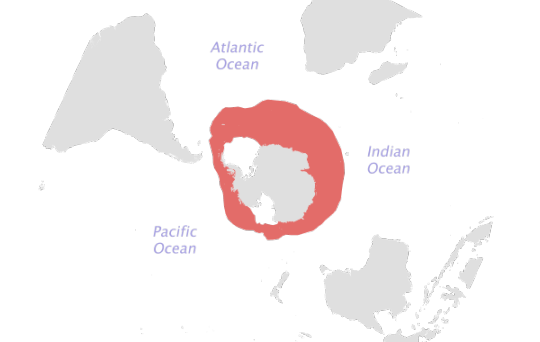
Figure 1. Geographical Distribution of Antarctic krill (fao.org, n,d,)
E. superba inhabits a wide circumpolar belt between the Antarctic Continental Shelf break and the Antarctic Polar Frontal Zone. Antarctic krill live in open marine waters (fao.org, n.d.). The larvae of the krill begin near the seafloor and gradually ascend towards the surface as it develops. Adult krills are found at depths ranging from surface waters to depths of 350 m and have occasionally been found as deep as 600 m. They usually dwell in deeper waters during the winter season (Gierak, n.d.).
Anatomy

Figure 2. External Anatomy of Antarctic Krill
E. superba known as Antarctic krills are shrimp-like in appearance though they can easily be distinguished from shrimp by their visible gills. Just like any other decapods they have exoskeleton which are made of chitin and have three body parts which is the cephalothorax, pleon and the telson. The cephalothorax bears the antennae, compound eye, 6 filter legs which are also called thoracopods and the gills. Krills have compound eyes which aid them in seeing while their antennae serve as another sensory organ as they live in the deep. The thoracopods or the filter legs on the other hand, assists the krill in straining its food from the water. Although the gills, guts and gastric mill are not part of its external anatomy, the three are visible from the outside. The middle part of its body is the pleon where the pleopods and the photophores are located. There are 5 pairs of pleopods or swimming legs that allow them to swim in the water column while the photophores or light organs act as a defense mechanism or a signal for their mates. Lastly, is the telson which is used by decapods as a paddle in caridoid escape reactions through backward propulsion (Grzimek's Student Animal Life Resource, n.d.).
Life Cycle
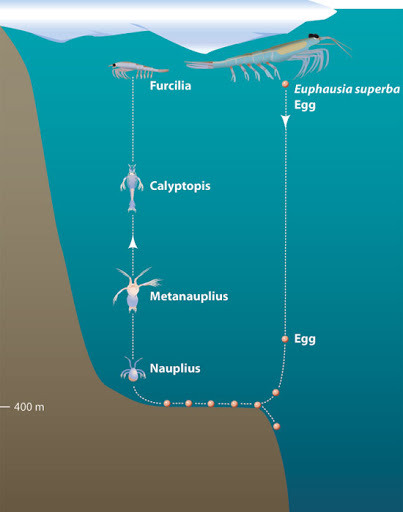
Figure 3. Life Cycle of an Antarctic Krills
Krills reproduce sexually and it usually happens when food is abundant. The male krill produces sperm packets and uses its first pair of pleopods called petasma to transfer the sperm into the thelycum of the female. They store the sperm until they are ready to lay their eggs. These eggs are fertilized once they are released by the female. These eggs settle at the seafloor and gastrulation happens. Eventually, the eggs will hatch and become a nauplius. In this the nauplius has only one eye and is not segmented yet. Then, the nauplius will molt and become a metanauplius wherein limb development begins and it will start to migrate to the surface which is known as developmental ascent. As it molts and grows, it becomes a calyptopis and eventually a furcilia wherein the movable compound eyes start to project at the edge of its carapace. The furcilia develops into a juvenile which can grow from 4 to 10 mm long (Gierak, 2013).
Ecology

Figure 4. Thoracic endopodite of krill (wikipedia.org, n.d.)
Antarctic krill are filter-feeders that feed mainly on phytoplankton. They exhibit diurnal vertical migration, which means that they rise to the surface at night to feed by using their small, hair-like legs specifically thoracic endopodites as a suspension feeding basket. Apart from phytoplankton, they also eat copepods, zooplankton, and other krill or molted exoskeletons. In the winter, they eat algae under the surface of sea ice. They are considered the dominant herbivore of the Southern Ocean. Its biomass in the Antarctic Ocean is estimated to be between 125 mmt and 750 mmt, the largest biomass of any species on earth (Hardy, 2008). Antarctic krill is the keystone species of the entire Antarctic food chain. They provide a vital food source for whales, seals, squids, penguins, fishes, albatrosses, and many other species of birds. To avoid predation, they exhibit schooling behavior or swarming. Moreover, krill may be parasitized by organisms like protozoans, particularly the genus Ephelota. This suctorian ciliates interacting with E. superba cause hydrodynamic drag on krill swimming and make the host more vulnerable to visual predators (Gómez-Gutiérrez & Morales-Ávila, 2016). Other parasitic species include Cephaloidophora pacifica and Apostoma sp.
UNLI-KRILL @ 199!
youtube
Krill’s POV
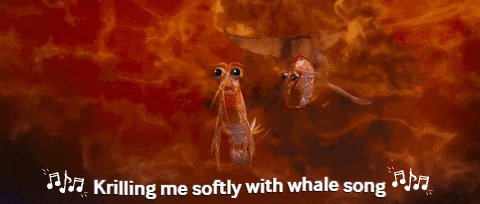
Relationship with humans

Figure 5. Sports Research’s Antarctic Krill Oil with SUPERBA 2 (ph.iherb.com, n.d.)

Figure 6. Krill/shrimp chili paste and dipping assortments in Thailand (quora.com, 2016)
Although krill is mainly used as aquaculture feed and bait for fishing, it is also processed into a variety of products for human consumption such as paste, frozen tails, sticks, etc. Krill products have been known to pharmaceutical and industrial industries since it is found that the krill's lipid content can be used as a nutritional source of fatty acids that is potential in lowering cholesterol levels. Studies found that the lipids of Antarctic krill are more stable than those of some fishes consumed by humans. Krill digestive proteases can also be injected into humans to reduce pressure on nerve roots between vertebral discs (Gierak, n.d.). Tou et al. describe Antarctic krill as a “rich source of high-quality protein” with low fat and high levels of Omega-3s and antioxidants and the main source of the renowned krill oil.
5 health benefits of Krill oil you shouldn’t miss!
youtube
Little did you know that..
They are age-defying!
*jaw-dropping moment because olay age-defying serum just cant--*
➔ They have the ability to shrink in size when starve to conserve energy during the winter. Thus, scientists can’t tell the age of a krill solely from its size.

Phytoplankton is just a summer fling!
➔ They can survive more than 200 days without food.
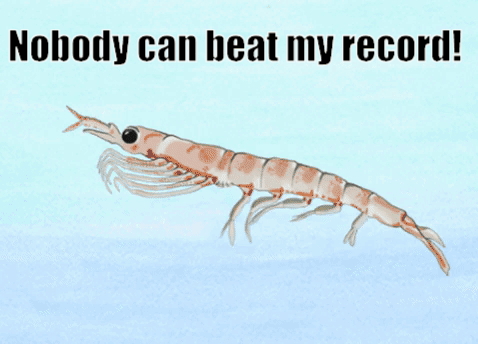
Krillions of krills!
➔ Krill swarm together in massive numbers, with as many as 30,000 in one cubic meter of a krill swarm.
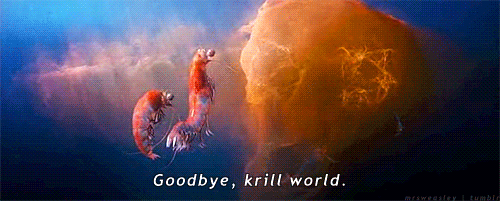
A Little Giant!
➔ It’s estimated that the total weight of Antarctic krill is more than the weight of all humans on Earth (Usoceangov, 2015).
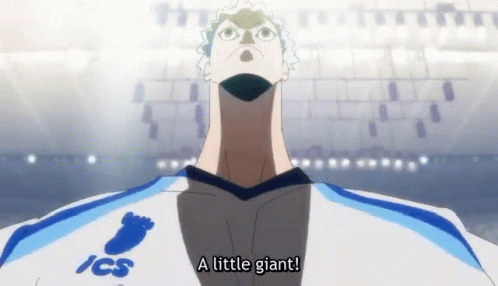
Food is life but swimming is lifer!
➔ They are heavier than seawater and must swim constantly to stay afloat.

Climate heroes!
➔ Tarling and Thorpe (2017) have discovered that krill play a crucial role in sequestering carbon.
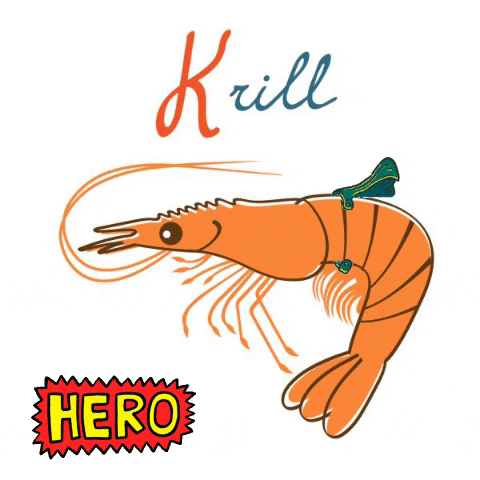
References:
Clark, D. (2012, September 17). The anatomy of the Arctic krill [Digital image]. Retrieved November 12, 2020, from http://1.bp.blogspot.com/-7NY88MHBVpc/UFfn-sAknuI/AAAAAAAAAW4/nkt1_Ba8G8k/s1600/Antarctic_krill_anatomy.jpg
Euphausia superba. (n.d.). ITIS. Retrieved November 8, 2020, from https://www.itis.gov/servlet/SingleRpt/SingleRpt?search_topic=TSN&search_value=95514#null
Euphausia superba (Dana, 1852). (n.d.). FAO. Retrieved November 10, 2020, from http://www.fao.org/fishery/species/3393/en
Exuvia of Antarctic krill [Online image]. (2005). English Wikipedia. https://commons.wikimedia.org/wiki/File:Exuviakrillkils.jpg
Gierak, R. (2013). Euphausia superba (Antarctic krill). Retrieved November 12, 2020, from https://animaldiversity.org/accounts/Euphausia_superba/
Gómez-Gutiérrez, J., & Morales-Ávila, J. R. (2016). Parasites and Diseases. Biology and Ecology of Antarctic Krill, 351–386. https://doi.org/10.1007/978-3-319-29279-3_10
Grzimek's Animal Life Encyclopedia. (2020). Krill: Euphausiacea. Retrieved November 12, 2020, from https://www.encyclopedia.com/science/encyclopedias-almanacs-transcripts-and-maps/krill-euphausiacea
Hardy, R. W. (2008). Alternative marine sources of fish feed and farmed fish quality. Improving Farmed Fish Quality and Safety, 328–342. https://doi.org/10.1533/9781845694920.2.328
Naruturd_505. (n.d.). Hoshiumi Korai A Little Giant GIF [Online GIF]. https://tenor.com/view/hoshiumi-korai-alittle-giant-smile-haikyuu-anime-gif-17909731
Oh, yeah- what?! GIF. (2013). Gfycat. https://gfycat.com/detailedfaintalbertosaurus
SuperSmiles17. (2013). Definitely one in a Krillion! [Online GIF]. https://imgur.com/gallery/YtN30/comment/16282449
Tarling, G.A., and Thorpe, S.E. (2017). Oceanic swarms of Antarctic krill perform satiation sinking. Proc. R. Soc. B., 28420172015. http://doi.org/10.1098/rspb.2017.2015
The Ozone Hole. (n.d.). [Life Cycle of Antarctic Krill]. Retrieved November 12, 2020, from http://www.theozonehole.org/images/v43n2-wiebe3en_10243.jpg
[Untitled image of a tardigrade]. (2017). BBC. https://www.bbc.com/news/science-environment-40752669
Usoceangov. (2015). Animals of the Ice - Antarctic Krill. Youtube. Retrieved November 10, 2020, from https://www.youtube.com/watch?v=RFqhocQqbgM
15 notes
·
View notes
Video
youtube
Brooke Lynn Hytes - Alive / Chandelier {Interlude} (Miss continental 2016, Vic Theatre, Chicago, 09/05/16)
#Brooke Lynn Hytes#Alive#Chandelier#Miss continental#Miss continental 2016#Vic Theatre#Chicago#09/16#2016#Interlude#full#youtube#Thedraglover#pageant#rupaul's drag race
9 notes
·
View notes